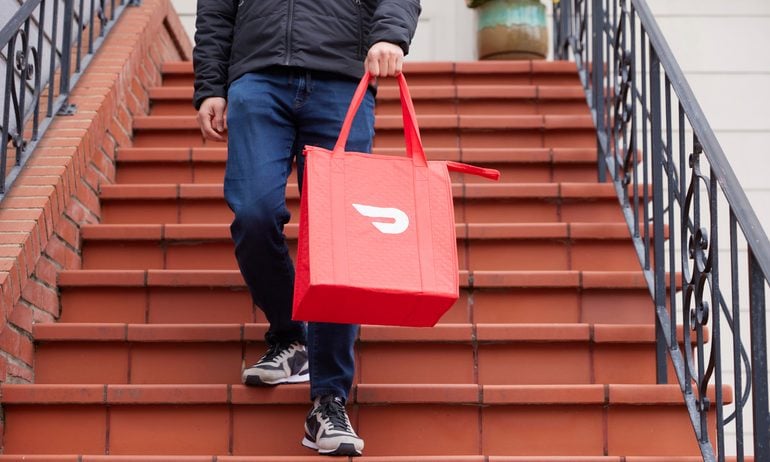What Is Surge Pricing?
Companies use technology to raise prices in real time when demand outstrips supply.

Many, or all, of the products featured on this page are from our advertising partners who compensate us when you take certain actions on our website or click to take an action on their website. However, this does not influence our evaluations. Our opinions are our own. Here is a list of our partners and here's how we make money.
Surge pricing is a strategy used by companies to automatically raise prices when demand for a product or service is high and supply is low. It’s a form of dynamic pricing and has become more common as artificial intelligence makes it easier to quickly and automatically adjust prices based on changing market dynamics.
Rideshare and delivery apps are some of the clearest modern examples of the surge pricing model in action. Uber calls it surge pricing, while Lyft has “prime time” and DoorDash charges “surge fees.” In each case, the price of service goes up when rider demand swells beyond the number of drivers available at the time or in the area.
But consumers run into surge pricing everywhere, whether booking travel, shopping online, buying concert tickets or paying utility bills. In fact, the strategy — also known as peak pricing — has been the bread and butter of airlines, hotels and other hospitality companies for decades. Whenever you pay more to travel on certain days or to popular destinations, you’re encountering surge pricing.
How surge pricing works
Companies that use surge pricing generally rely on technology to do the complicated work of analyzing data and identifying the price that best suits the market dynamics at play. Advances in technology, including AI, allow companies to make strategic price changes in real time. That’s what’s happening when the cost of an Uber goes up near a concert venue after a show ends.
Undeniably, surge pricing enables a company to maximize profit at a time when customer demand is highest. But that’s not the sole purpose of the price hike. It’s also meant to bring supply and demand back into balance, economists say. Uber’s surge price is meant to simultaneously incentivize an increase in the supply of drivers by promising a higher return per fare and temper rider demand by charging a rate that some customers won’t be willing to pay.
By that logic, customers who think the price is too high actually play a big role in bringing it back down. If enough people refuse to pay the surge price and find a cheaper alternative, the pricing algorithm will see the drop in demand and adjust prices.
When surge pricing becomes unfair
This type of flexible pricing may be informed by the basic economic principle of supply and demand, but that doesn’t mean it’s always fair. For example, raising prices on necessary goods and services during an emergency is generally regarded as unfair. Sometimes, it’s also illegal.
A decade ago, the New York Attorney General’s office investigated Uber for illegal price gouging over the way it implemented surge pricing during severe weather. “The ability to pay truly exorbitant prices shouldn’t determine someone’s ability to get critical goods and services when they’re in short supply in an emergency,” then-AG Eric Schneiderman wrote in an op-ed published in April 2014 in the New York Times.
As a result, Uber agreed to limit surge pricing during emergencies, according to a July 2014 news release from Schneiderman’s office.
Surge pricing vs. dynamic pricing
Surge pricing is related to dynamic pricing but the terms aren’t interchangeable. Dynamic pricing is a broad term that implies prices could go up or down, depending on what’s happening in the market. Surge pricing is more narrow, since it refers only to prices increasing.
The nuance of these flexible pricing terms has been a source of confusion that can get companies into trouble. When executives said during an earnings call in February that Wendy’s plans to implement dynamic pricing in 2025, anger flared as customers assumed the strategy would bring surging prices during busy times. The fast-food chain quickly clarified it intends to do the opposite — use AI to lower prices during slow periods.Consumers are not eager to see flexible pricing models adopted more broadly. In fact, 22% of Americans say they would not spend money at a business that uses dynamic pricing, according to a recent NerdWallet survey conducted online by The Harris Poll. And 25% say they’d only spend money at that business when prices were down.

